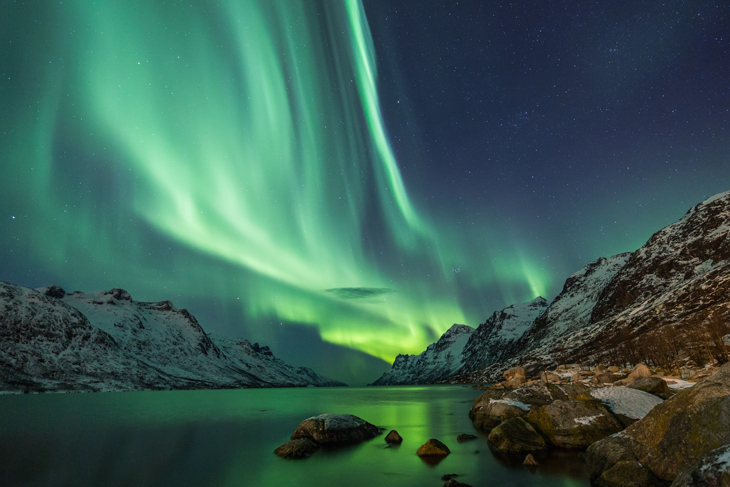The Aurora Borealis, also known as the northern lights, are a gorgeous natural light display caused by the collision of energetic charged particles with atoms in the high altitude atmosphere. The result is a stunning greenish neon light that illuminates the night sky. Iceland’s geographic location puts it directly under the main concentration of the northern lights annulus (or Great Belt), making it one of the most perfect locations to view this natural phenomenon. Check out some of the most frequently asked questions below to find out how you can see the northern lights on your next trip!
When is the best time to see the northern lights in Iceland?
The skies above Iceland are beautiful year round, with celestial gifts that span the seasons. Summer has the Midnight Sun bringing near-endless bright skies, but from fall until spring it’s the northern lights that draw eyes to the heavens.
The peak of the northern lights viewing season is from September through March. However, the luminous lights can be visible in the right conditions as early as mid-August, and as late as May.
Can you see the northern lights from Blue Lagoon?
Yes, absolutely. Blue Lagoon is the perfect location to see the northern lights during the season. The lagoon is perfectly set in a beautiful naturescape, surrounded by moss-covered lava fields. There is minimal light pollution to disturb the view.
At Blue Lagoon they frequently monitor the skies during the northern lights season and follow the aurora forecasts. When Blue Lagoon sees the aurora begin gracing the night sky, they dim the lights so the illuminations are more easily visible for guests.
At the Retreat Hotel and Silica Hotel, guests can request a northern lights wake-up call, to ensure they won’t miss the aurora action even if it occurs in the middle of the night.
What are the right conditions for the northern lights?
To view the northern lights, you need darkness and partly clear skies. It’s important to understand that above all else, the presence of the capricious lights is dependent on solar activity.
Auroras are caused by electrons that travel from the sun to the Earth on solar winds and are drawn to the magnetic fields found close to the North and South Poles. Once there, they mix with gases in the atmosphere, causing the gases to glow. The result is the mesmerizing light show we witness.
Solar flares (a giant explosion on the surface of the sun) can also cause the northern lights to appear.
Various tools measure geomagnetic activity (the ‘Kp index’) to give an indication of the likelihood of seeing the northern lights, usually a few days in advance. You can also check out the official website of the Icelandic Met Office for further guidance and predictions.
Have you ever seen the Aurora Borealis in Iceland? Let us know in the comments below and share your pictures!


Comments
article Next
article